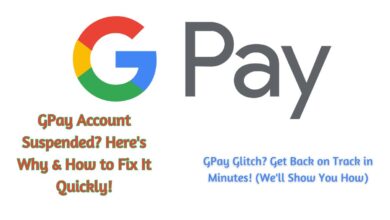How to Activate an Inactive or Dormant Bank Account? Don’t Lose Access to Your Forgotten Funds
Learn how to activate an inactive or dormant bank account easily and regain access to your funds with simple steps.

To reactivate an inactive bank account, you might just need a quick transaction. For dormant bank accounts (inactive for longer), contact your bank to verify your identity and restart the account.
Life can get very busy, and it’s easy to forget about things like bank accounts. Maybe you opened an account years ago for a specific reason and then never used it again. Or perhaps you moved away from a certain place and didn’t close your local bank account.
When this happens, your account can become inactive or even dormant. But don’t worry! Getting back into your account and accessing your money is simpler than you might think. In this guide, we’ll take you through the steps to reactivate an inactive or dormant bank account, so you can make sure you don’t lose access to your hard-earned cash.
Dormant Bank Account
Have you ever wondered what happens to a bank account that sits unused for a long time? When an account has no activity for a specific period, usually around two years, banks classify it as inactive or dormant. There are many reasons this might happen. Maybe you opened an account in college and forgot about it.
Perhaps you moved to a new state and didn’t close your old local account. Or you might have set up an account for a specific purpose and never used it again. No matter the reason, having a dormant account can lead to some unwanted consequences, like fees or difficulty accessing your money. Understanding what happens with dormant accounts can help you avoid these issues.
Signs Your Account Might Be Dormant
While banks usually notify you before your account becomes dormant, sometimes life gets busy, and those notifications might get missed. Here are a few signs that your account might be dormant:
Missing Account Statements: If you haven’t received any bank statements for your account in over a year, this could be a red flag that your account is dormant.
Returned Mail: If any mail from your bank gets returned to you marked “undeliverable,” it might indicate that the bank is having trouble contacting you about your inactive account.
Limited Online Access: If you’re unable to access your online banking profile for a specific account, this could be because the account has been restricted due to inactivity.
Unexpected Fees: If you notice any unexplained fees appearing on your account statement, banks may be charging maintenance or inactivity fees on dormant accounts.
If you suspect your account might be dormant, don’t panic! There are steps you can take to reactivate it and regain access to your money.
Reactivating Your Dormant Account: A Step-by-Step Guide
Dormant accounts may seem like a hassle to deal with, but the reactivation process is generally straightforward. Here’s a step-by-step guide to help you navigate the process:
Assessing Your Situation
Before contacting your bank, it’s wise to do a little detective work on your own. Here’s how to assess your situation:
Check Your Records: Look for any recent bank statements or online banking information related to the account. This will help you confirm the account number and identify any activity that might have prevented it from becoming dormant, such as automatic deposits.
Review Account Terms: If you can locate the original account agreement or any online account details, skim through the terms and conditions. This might provide information on the bank’s specific dormancy policy and any associated fees.
Contacting Your Bank
Once you’ve gathered some preliminary information, it’s time to reach out to your bank. Here are the different methods you can use:
Phone Call: This is a common and convenient option. Be prepared to provide your personal information (name, social security number) and any account details you have readily available.
Branch Visit: If you prefer a face-to-face interaction, head to your local branch. Bring a valid government-issued ID (driver’s license, passport) and any documentation related to the account (statements, account number).
Online Chat: Many banks offer secure online chat options where you can connect with a customer service representative and discuss your situation.
Email: While not the fastest option, sending an email outlining your request and relevant account details can be a good choice for documentation purposes.
Required Documents and Information
To reactivate your dormant account, the bank will likely require some documentation and information from you. Here’s what to expect:
Government-issued ID: A valid driver’s license, passport, or state ID will help verify your identity.
Proof of Address: This could be a recent utility bill, rental agreement, or bank statement from another account with your current address.
Account Number: Having your account number handy will expedite the process.
KYC (Know Your Customer) Information: For older accounts, the bank might need to update your KYC information according to current regulations. This may involve providing additional documents proving your identity and address.
The Reactivation Process
The specific reactivation process may vary slightly depending on your bank. However, the general flow involves:
Submitting the Required Documents and Information: Provide the necessary documents to the bank either in person, online, or via mail.
Identity and Account Verification: The bank will verify your identity and account ownership.
Updating KYC Information: Complete any necessary updates to your KYC information to comply with current regulations.
Account Reactivation: Once everything is verified, the bank will reactivate your account, and you’ll regain full access to your funds.
By following these steps, you can easily reactivate your dormant account and ensure you have access to your money when you need it. Don’t let a dormant account cause you unnecessary stress—take action today and get back on track.
Additional Considerations
While the core reactivation process is fairly standard, there are a few additional situations to keep in mind:
Dormant Accounts with Multiple Signatories
If your dormant account has multiple signatories, such as a joint account, all account holders will likely need to participate in the reactivation process. This may involve providing individual identification and potentially visiting the bank together, depending on the bank’s policy.
Fees Associated with Dormant Accounts
It’s important to be aware of potential fees associated with dormant accounts. These can include:
Inactivity Fees: Some banks charge a monthly or annual fee for accounts with no activity.
Account Maintenance Fees: Similar to inactivity fees, these charges might apply for simply maintaining a dormant account.
Returned Item Fees: If the bank attempted to send you notifications about your dormant account that were returned due to an outdated address, you might incur a fee for each returned item.
In some cases, you may be able to negotiate these fees with your bank, especially if you can explain the reason for the account’s inactivity. Be proactive in discussing these fees with your bank to potentially reduce or waive them.
Dormant Accounts Held by Deceased Individuals
If you’re dealing with a dormant account belonging to a deceased individual, the reactivation process will differ. This typically involves following the bank’s probate procedures and providing documentation like a death certificate and legal authorization to access the account. Be sure to contact the bank directly to understand their specific requirements for handling such accounts.
By considering these additional factors, you can navigate the reactivation process more smoothly and address any special circumstances that may apply to your dormant account.
Preventing Future Dormancy
Once you’ve successfully reactivated your dormant account, you can take steps to prevent it from falling back into that state again. Here are some proactive tips:
Set Up a Small Recurring Transaction: Schedule a minimal monthly transfer (even a few dollars) from another account to your previously dormant account. This minor activity keeps the account from becoming inactive and helps avoid potential fees.
Monitor Your Account Statements: Review your bank statements regularly, either electronically or through paper statements you receive by mail. This helps you stay informed about any account activity and potential dormancy warnings from your bank.
Update Your Contact Information: Ensure your bank has your current mailing address and phone number on file. This ensures you receive important notifications and reduces the risk of missed communications that could trigger dormancy.
Consider Account Consolidation: If you have multiple accounts you rarely use, consider consolidating them into a single active account. This simplifies your financial management and reduces the chance of accounts becoming dormant due to neglect.
By following these simple tips, you can keep your accounts active and easily accessible, ensuring you always have control over your hard-earned money.
- How to Unban Your PayPal Account? Don’t Panic, There’s Hope!
- How to Unban Depop
- How to Activate Suspended Apple ID: Regain Control in Minutes
Conclusion
Reactivating dormant accounts may seem like a hassle, but it’s actually quite manageable with the right approach. By following the steps in this guide, you can easily regain access to your forgotten funds and keep your bank accounts active for whenever you need them.
Remember to stay proactive by keeping your accounts active and updating your contact information regularly to prevent future dormancy. Don’t let your hard-earned money sit forgotten—take action today and regain control of your dormant accounts!
Frequently Asked Questions (FAQ) on Dormant Bank Accounts
How long does it take to reactivate a dormant account?
The reactivation timeframe varies depending on your bank and situation. Typically, it can be completed within a few days if all necessary documents are readily available. However, additional verification or KYC updates might extend the process.
What if I don’t remember my account number?
If you can’t recall your account number, contacting your bank is best. They can likely help you retrieve it by verifying your identity using other information like your name, social security number, or date of birth.
Can I reactivate a dormant account online?
Some banks offer online reactivation options through their secure banking platforms. However, this may not be universally available. Check with your bank directly to see if online reactivation is an option for your situation.
Will I lose the money in my dormant account?
No, the funds in your dormant account remain safe with the bank. However, there’s a possibility of inactivity fees or returned item charges being applied during dormancy.
What happens if my dormant account contained a very small balance?
Some banks have dormancy escheatment policies. If your dormant account has a low balance and remains inactive for a while, the bank might transfer the funds to the state. You can reclaim these funds by contacting the state’s unclaimed property division.
What if I’m dealing with a dormant account from a bank that no longer exists?
If the bank holding your dormant account has merged or gone out of business, the FDIC can help you locate the successor institution or transferred accounts. Visit the FDIC website for more information and resources.



